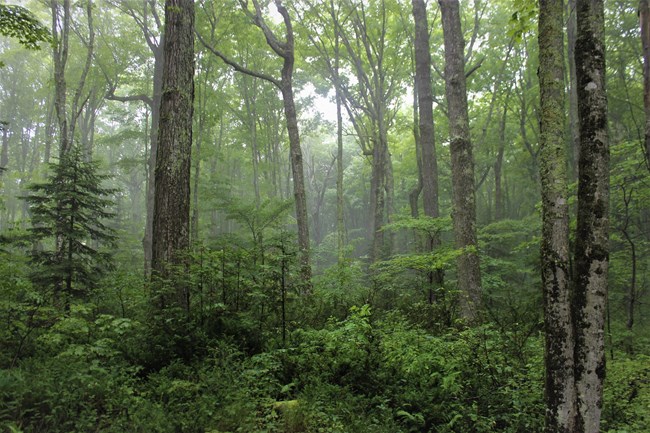 Environmental & Science Education
Environmental & Science EducationSTEM
Climate Change
Sustainability
Edward Hessler
In addition to wood products, the world's forests provide many benefits, e.g., aesthetic, recreation, maintaining and enhancing biological diversity, improving water quality, and reducing erosion.
A research report in the journal Science notes "that adding nearly 1 billion additional hectares (~24,710,538,114 acres) of forest could remove two-thirds of the roughly 300 gigatons (~330,693,393,277 tons) of carbon have added to the atmosphere since the 1800s." These numbers are almost without meaning to those of us who don't use them routinely but I hope they help you understand scale for a part of the cure for global warming.
The research was stimulated by the most recent report from the United Nations's Intergovernmental Panel on Climate Change which recommended "adding 1 billion hectares of forests to help limit global warming to 1.5 degrees C by 2050." A recommendation is one thing; room on the planet is another. So ecologists at the Swiss Federal Institute of Technology in Zurich decided "to figure out whether today's Earth could support that many trees, and where they might all go." The good news is that there is room.
The authors also addressed another issue: cost. It is $300 billion based on an estimate of $0.30 per tree. That cost comes with the benefits listed above.
There is sure to be disagreement about the analysis but this paper is a reference point for future research. In the general summary from Science, Laura Duncanson, a carbon storage researcher at the University of Maryland not involved in the original research, notes that just how much carbon future forests could store is not known but NASA instruments already in space can be used to "add much-needed precision to existing estimates of above ground carbon storage."
Science's Alex Fox provides a short summary of the scientific paper for general readers which includes as a masthead, a map of where the world could support these new forested areas. The scientific paper is behind a membership and pay wall, but you can read the abstract and read the names of the authors.
So I waited for an informed response.
It was not too long that over at RealClimate, "a commentary site on climate science by working climate scientists for the interested public and journalists," Stefan Rahmstorf (Potsdam University) raises a number of technical considerations, fact checking, and as importantly, provides context for several of the points made in the report. Rahmstorf also includes links to several popular articles that resulted from the publication. This is his conclusion:
"The massive planting of trees worldwide is therefore a project that we should tackle quickly. We should not do that with monocultures but carefully, close to nature and sustainably, in order to reap various additional benefits of forests on local climate, biodiversity, water cycle and even as a food source. But we must not fall for illusions about how many billions of tons of CO2 this will take out of the atmosphere. And certainly not for the illusion that this will buy us time before abandoning fossil fuel use. On the contrary, we need a rapid end to fossil energy use precisely because we want to preserve the world’s existing forests."

Rahmstorf's commentary prompted a response from Claude Garcia, one of the co-authors of the original report (Scroll to response #33). Garcia makes this point: "What you are describing are likely story arcs (high probability scenarios) – and we agree with all the points you are making. What we outlined with our paper is the extreme limit of what a story arc involving forest restoration can look like – an almost zero probability of occurrence. We measured a potential – and we all know a potential never gets to be fully realized. Beyond that, there no way through."
In response Rahmstorf notes the usefulness of estimating a potential but the "main point here is that the claim by your first author – as quoted by National Geographic – that “reforestation can buy us time to cut our carbon emissions” is the wrong conclusion. We need to cut our carbon emissions right now, and giving politicians the message that in the light of your study we now have more time is dangerous. It was tweeted enthusiastically here in Germany by those that resist emissions reductions."
Finally, I want to add that a forest is more than trees. Monocultures of trees are not a forest. The forests to be saved and restored must be as close to natural as possible.

 CGEE Student Voice
CGEE Student Voice
No comments:
Post a Comment